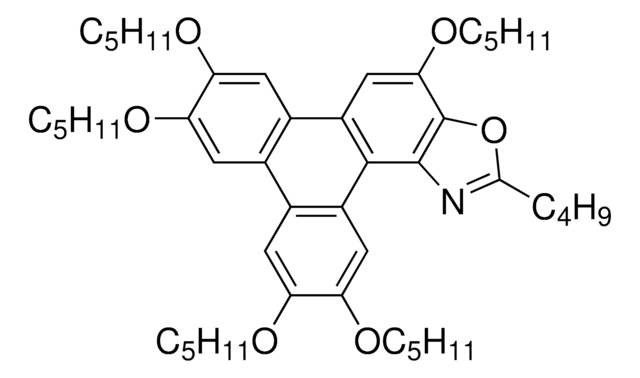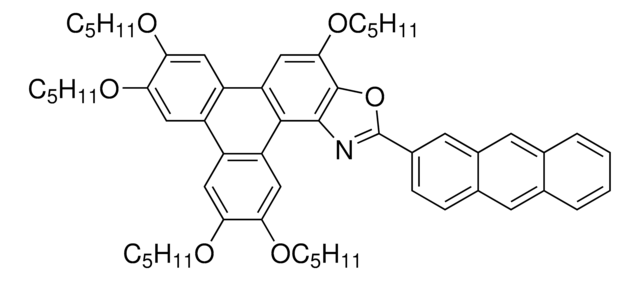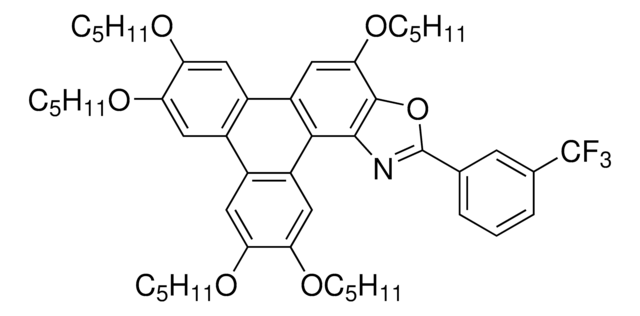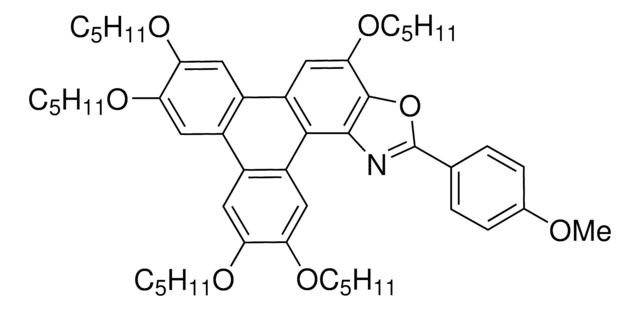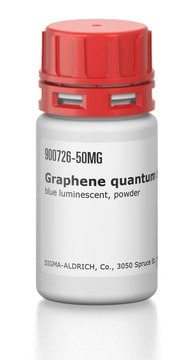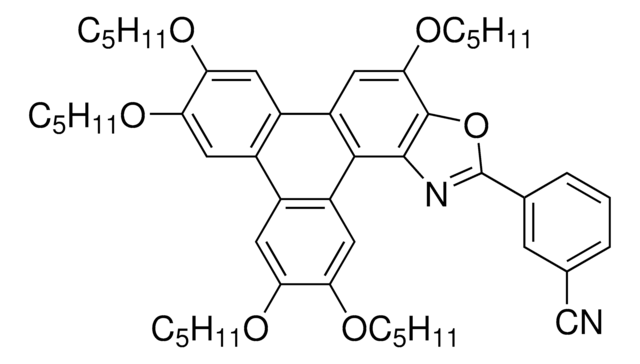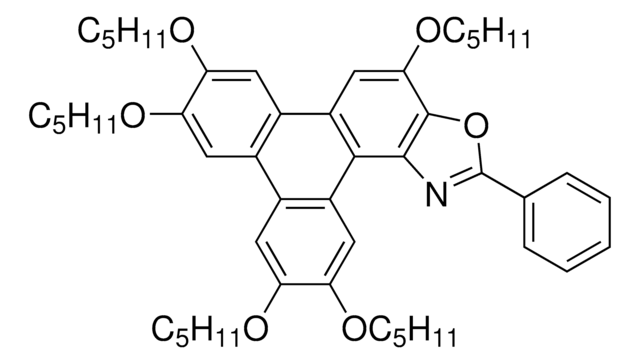About This Item
Recommended Products
description
Polymorph crystalline phase: Solid, Discotic Liquid Crystal, Isotropic
Quality Level
transition temp
discotic phase to isotropic phase 148 °C (heating)
crystalline phase to discotic phase 89 °C (heating)
solubility
soluble (THF > 1 mg/mL, MeCN < 0.63 mg/mL, DMSO < 0.43 mg/mL, DCM > 1 mg/mL)
λmax
271 nm in ethyl acetate
εmax
61,000 M-1cm-1 in ethyl acetate
fluorescence
λem 499 nm, quantum yield 0.53 (pSS(nm) = 228; Fluorescence lifetime (ns) = 6.49)
storage temp.
−20°C
General description
Application
- Fluorescent dye staining
- Organic semiconductor for organic electronic and photonic applications
- Multi-photon microscopy
Caution
Storage Class Code
11 - Combustible Solids
WGK
WGK 3
Flash Point(F)
Not applicable
Flash Point(C)
Not applicable
Choose from one of the most recent versions:
Certificates of Analysis (COA)
Sorry, we don't have COAs for this product available online at this time.
If you need assistance, please contact Customer Support.
Already Own This Product?
Find documentation for the products that you have recently purchased in the Document Library.
Our team of scientists has experience in all areas of research including Life Science, Material Science, Chemical Synthesis, Chromatography, Analytical and many others.
Contact Technical Service